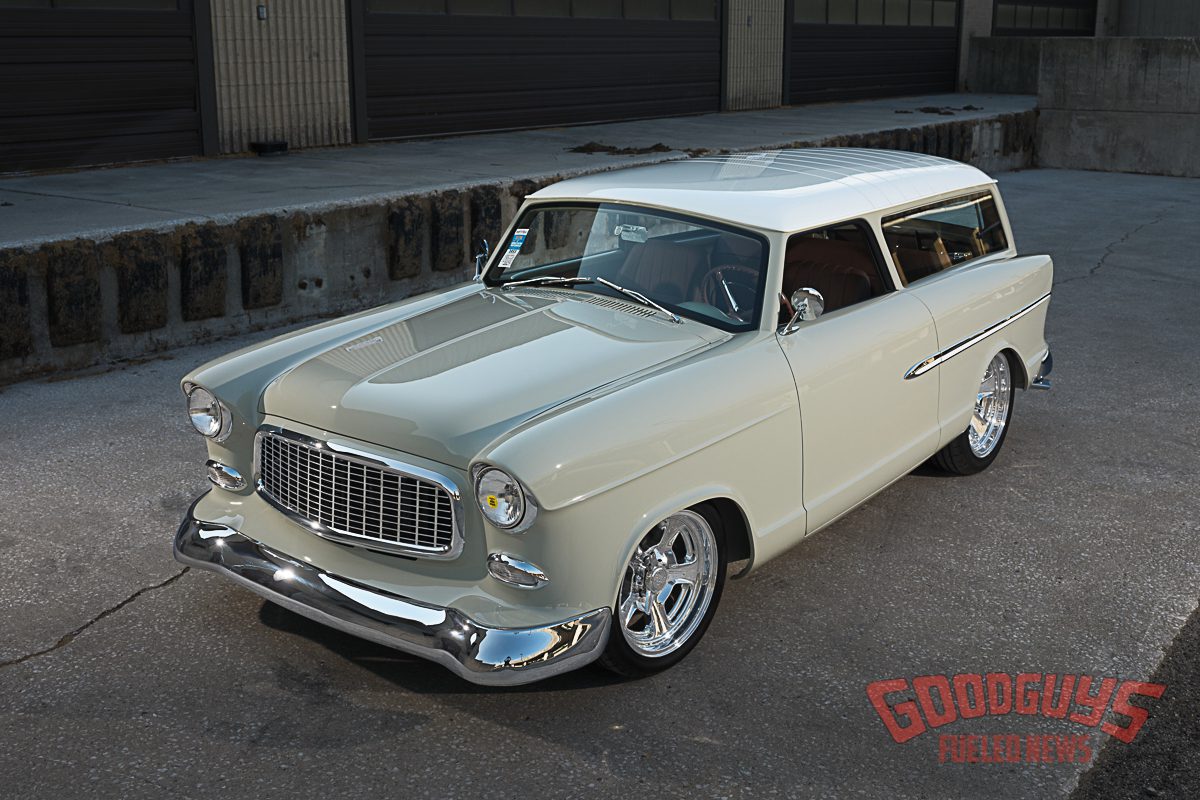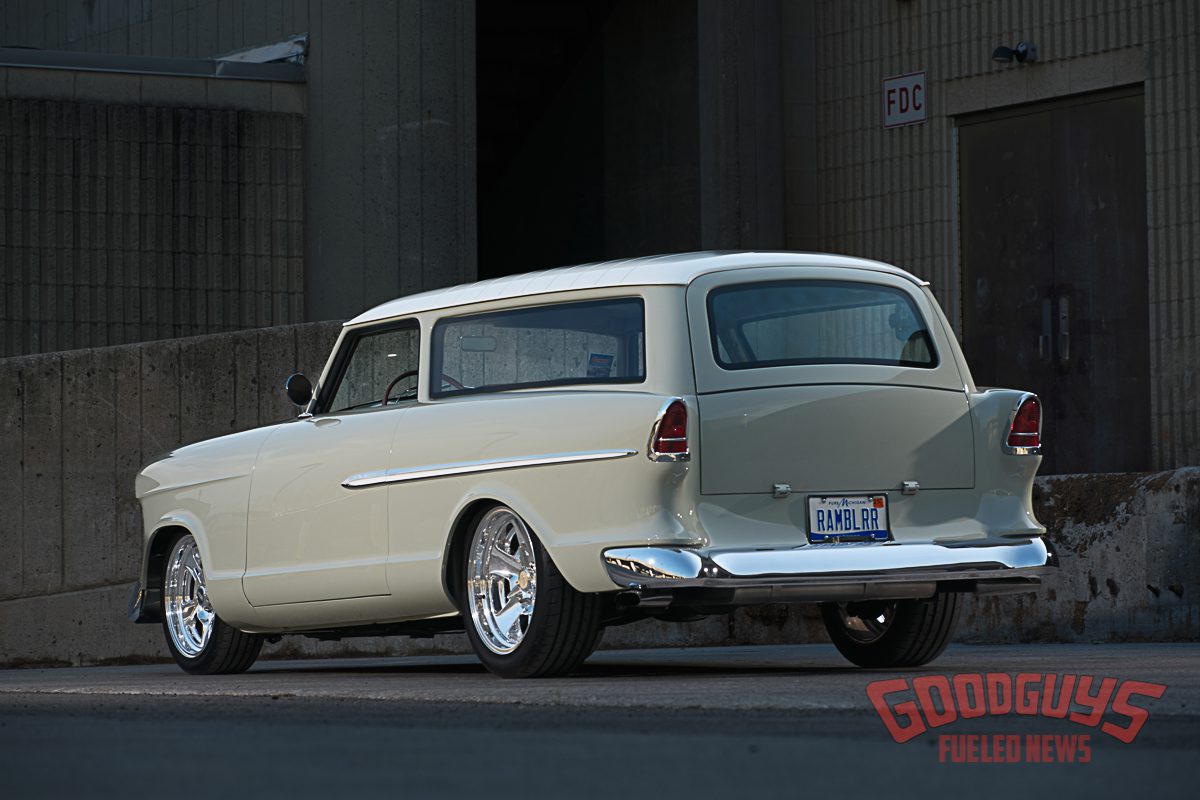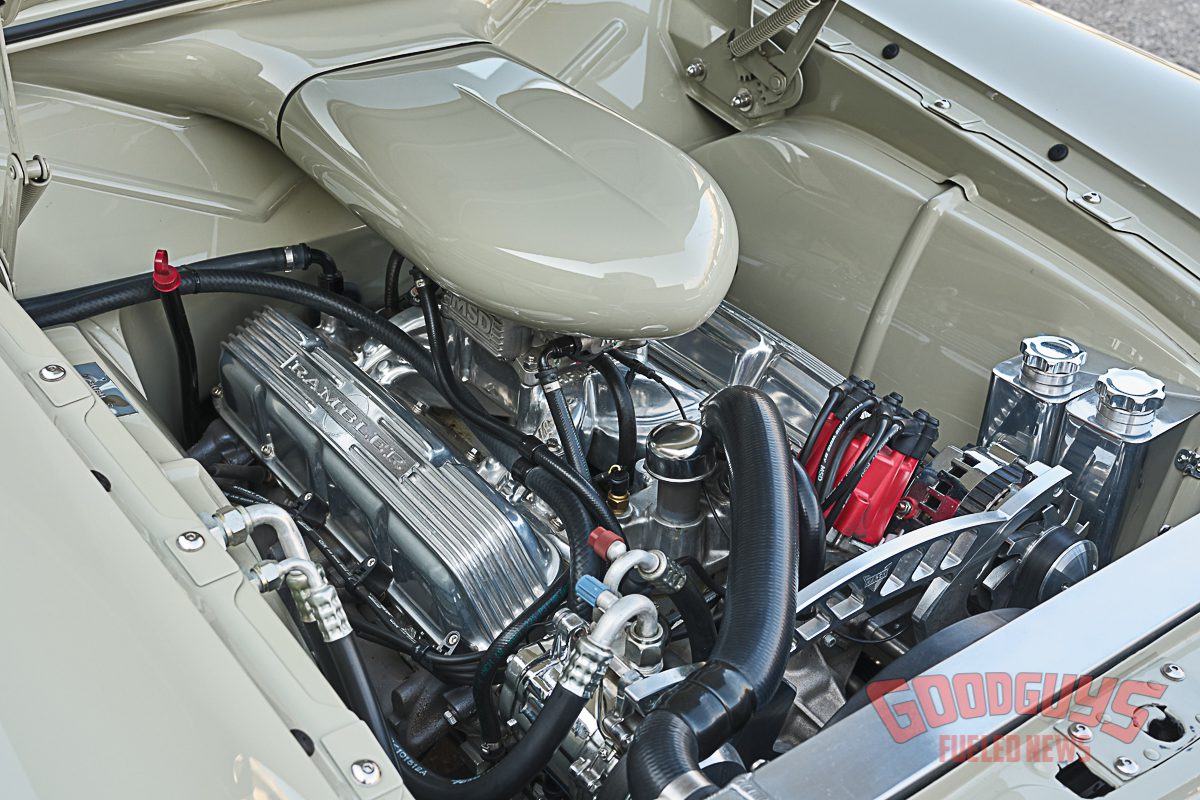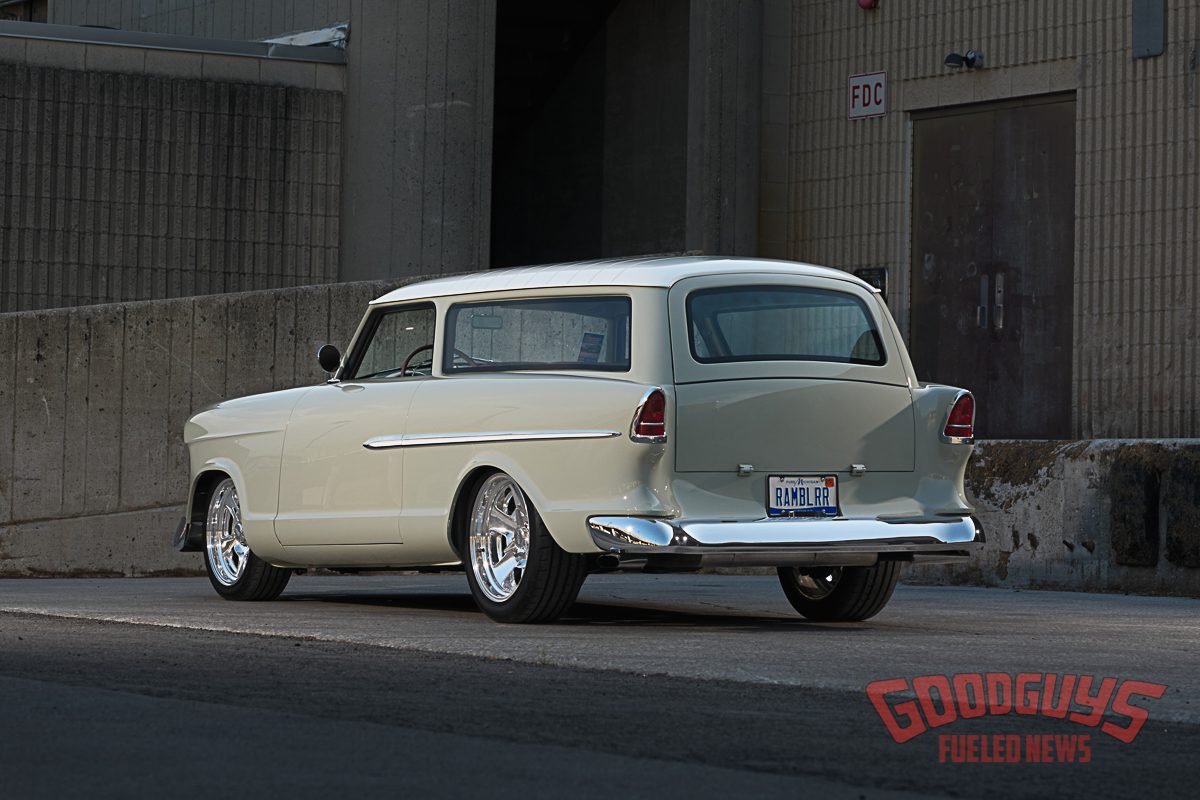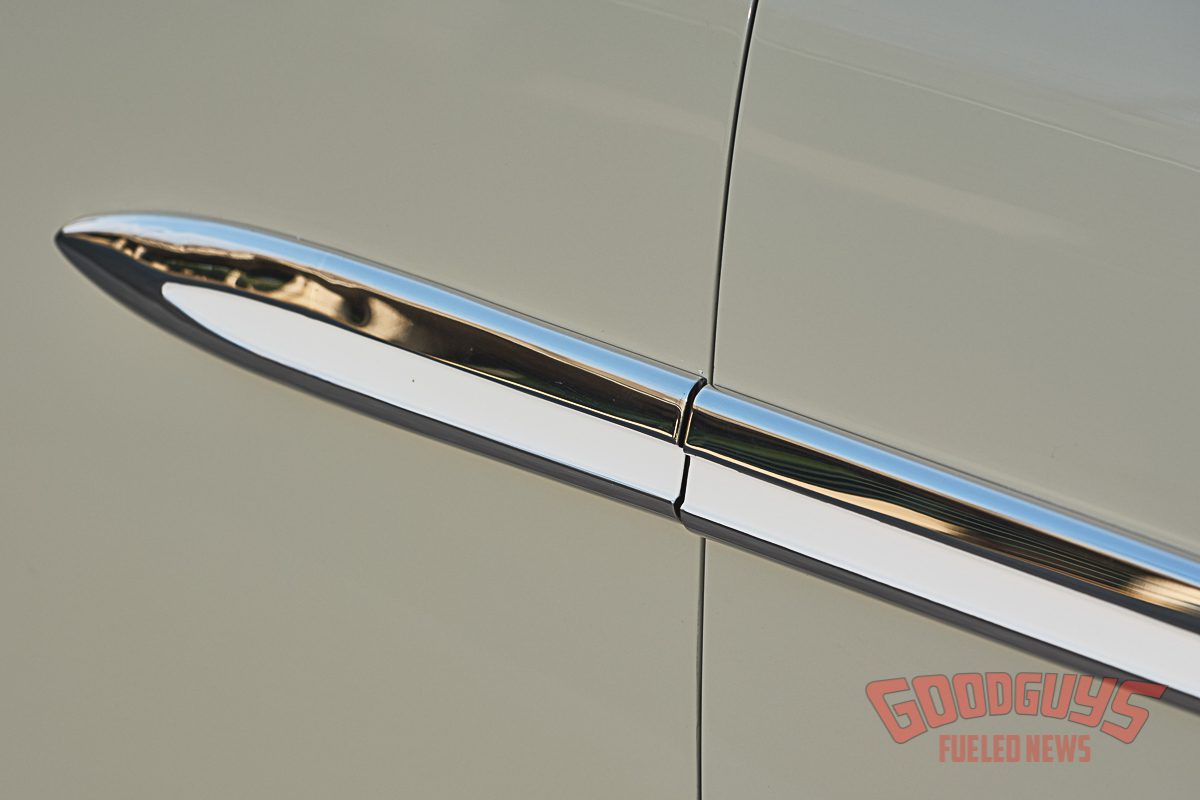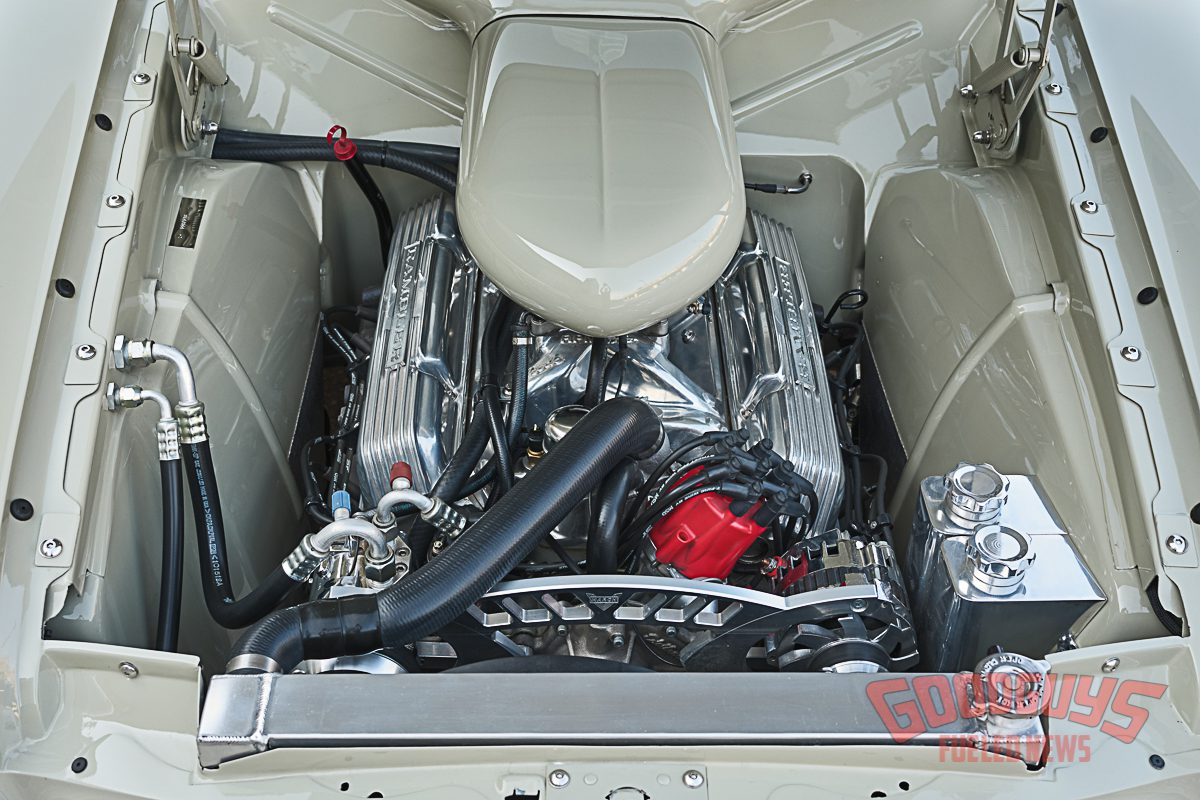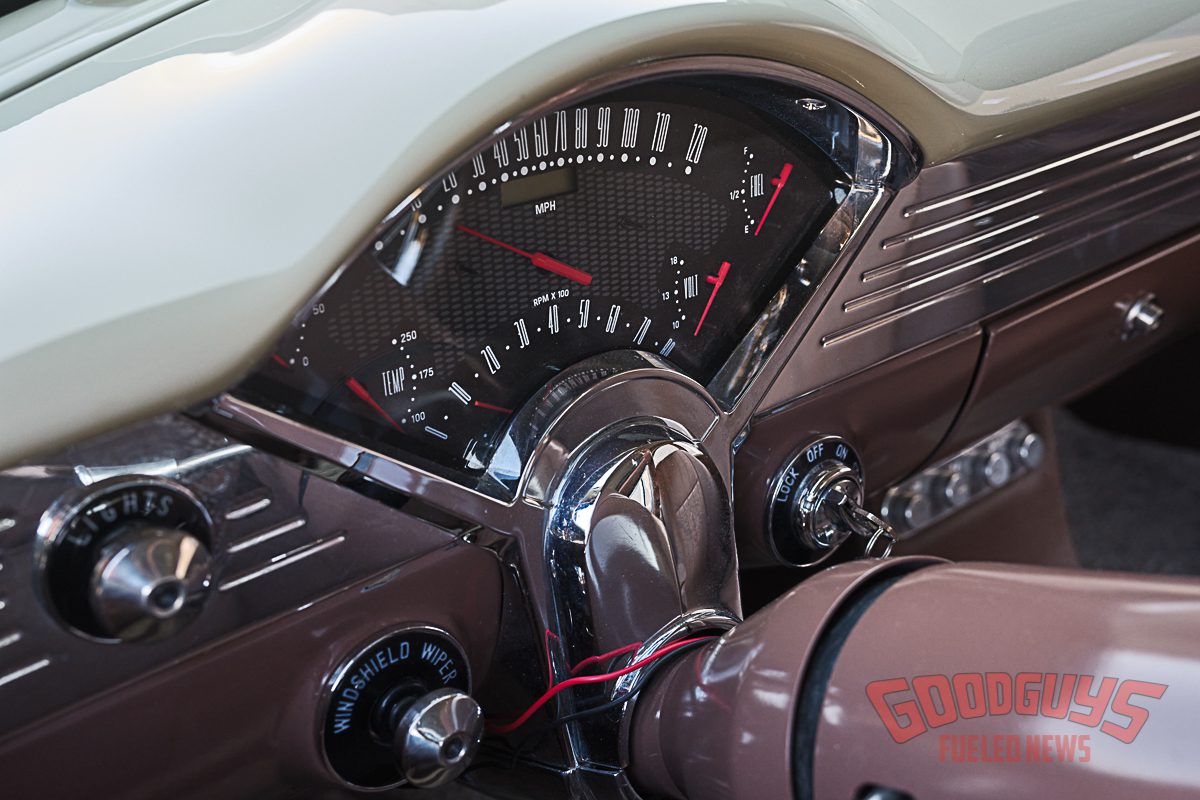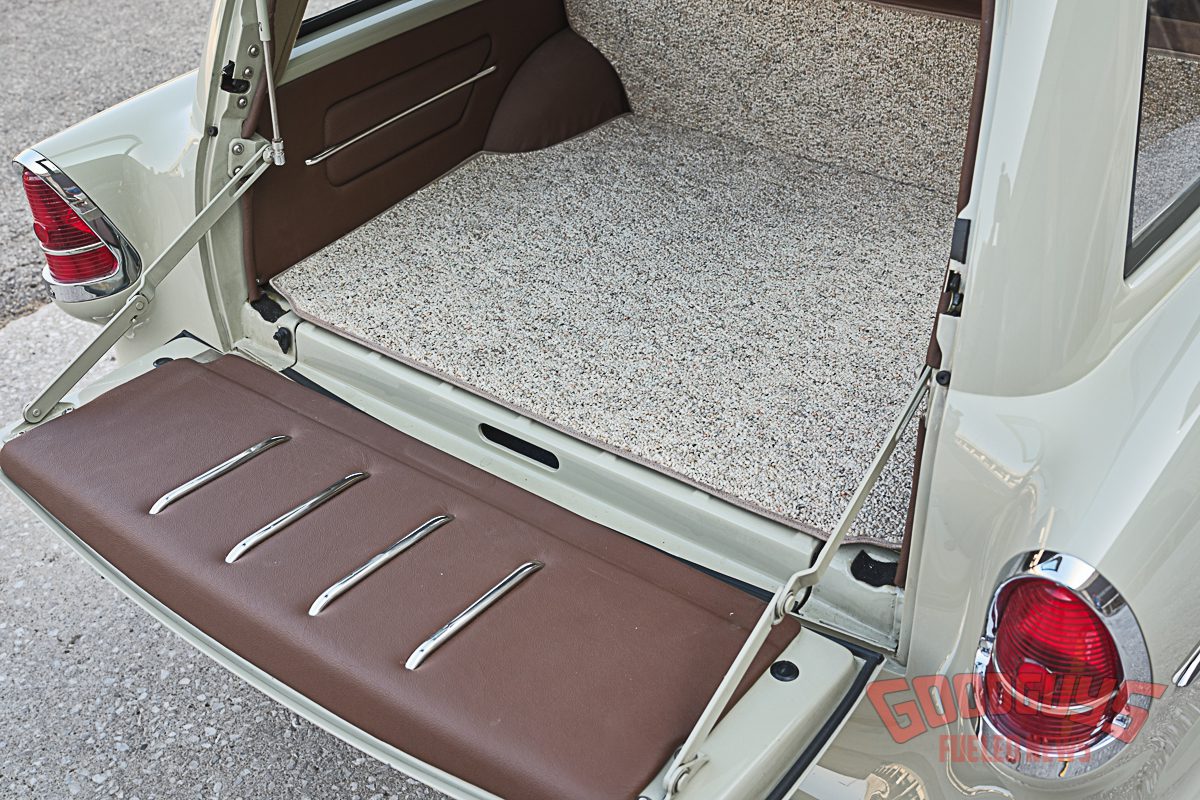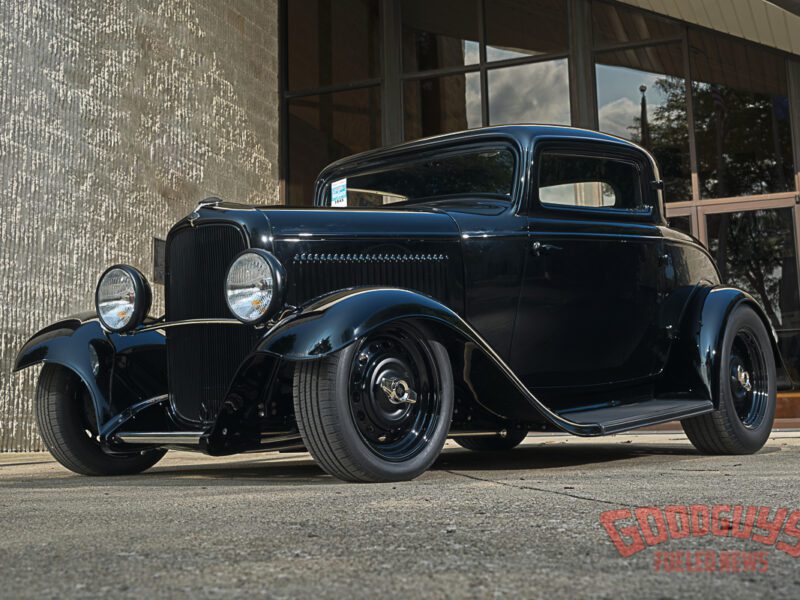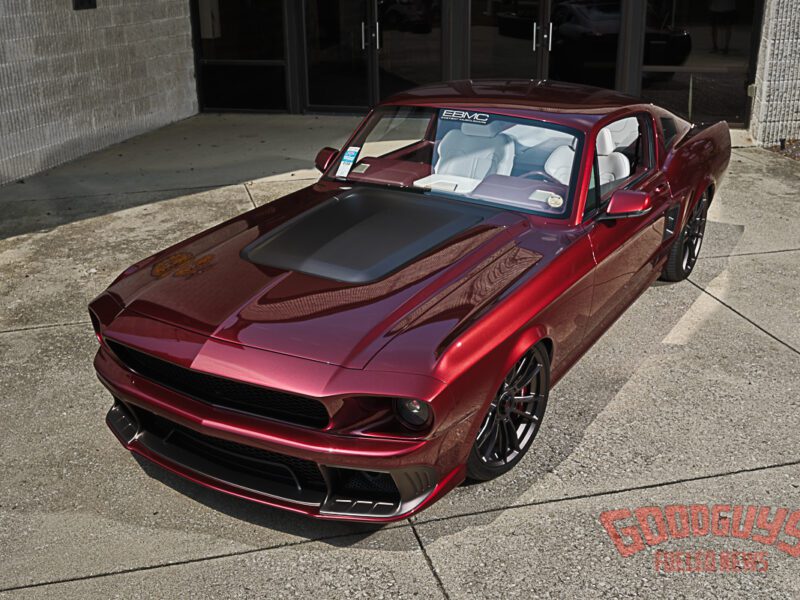Ramblin’ Mad – Blending Nomad Elements with a 1960 Rambler American Wagon
There are two principal reasons so many people attend Goodguys events every year. The first is to display their own pride and joy. The second is to see what’s new in classic cars from other builders and enthusiasts. Marv Wiegand’s clean 1960 Rambler American station wagon was one of the rides that stood out to us this summer at the Goodguys Nationals in Columbus, drawing us in with its creativity and craftsmanship. And it had more than one observer scratching their head and wondering, “What is it?”
While in Arizona one winter to escape the Michigan snow, Marv discovered a rust-free 1960 Rambler American station wagon in a Peoria salvage yard, and the wheels of his mind started turning. It was a two-door, with canted B-pillars and open wheel arches. Kinda like a ’55 Chevy Nomad, a model Marv had always admired, but the right circumstances for buying or building one had not yet converged.
Marv struck a deal on the Rambler and began to formulate a plan for it. One matter was to explain the purchase to his wife, Patricia. “She couldn’t quite see the vision,” he recalled. One who could see that vision was a friend, Murray Pfaff of Pfaff Designs. He sketched two concepts for the Rambler, one using ’55 Nomad design elements and the other favoring those of a ’55 Ford two-door Ranch Wagon.
Marv made the decision to go with the Nomad look when he found a ’55 Chevy parts car advertised for sale. “I bought it,” he said, “and the guy let me take all the parts I needed. I took the front fenders, back sections of the rear quarter panels, both bumpers, the hood and dashboard, and a few other items.” Stashed in, around, and underneath the Rambler wagon, it made quite a haul back home to Michigan in the spring.
For the next three years the project of building an American Motors Rambler version of the General Motors sport station wagon concept would occupy the one-and-a-half stall garage of Marv’s good friend, Andre Brenier.
“I’m good at figuring out how a project needs to be done and doing the rough stuff,” said Marv. “Then I let somebody else do the finish work. Andre had done five cars for me before, and I knew I could trust him to do it right.”
The Chevrolet front fenders were spliced into the 1960 Rambler body with the hooded headlights, parking lights, and character lines intact. The center of the Chevy hood was similarly sectioned into the Rambler’s lid. A new cross-hatch grille insert fashioned from stainless steel strips was installed within the Rambler grille frame.
Similarly, the Chevy rear quarter panel sections containing the taillights were fitted to the rear of the car, along with Bel Air trim spears. The ’55 Chevy front and rear bumpers were narrowed 10 inches and had the bolt holes filled before being re-chromed and installed to the leaner 1960 Rambler.
A mild chop was accomplished by removing the top skin, then lowering the support pillars two inches into the lower body. Mike Kleeves from Automobile Metal Shaping in St. Clair, Michigan (since relocated to Morganton, North Carolina) was called in to shape the skin. A craftsman famed for his metal restoration work on classics and exotic sports cars, Kleeves used a Pullmax, one of many tools in his arsenal of metalworking devices, to form grooves across the top skin to match those on Nomad roofs. The process also reduced the roof’s crown and made it possible to reattach the skin without adding metal. (The transverse grooves in the roofs of 1955-57 Chevy Nomads were left over from the station wagon’s original concept of a roof on which the back portion would telescope open to the fresh air and sunlight! The expense killed that idea at GM.)
When all the metalwork was completed on the hybrid wagon, it was treated to a two-tone finish, as all ’55 Nomads were, with DeBeer Refinish Desert Khaki on the main body and a white top, all by Auto One in Richmond, Michigan. The cut-down windshield and one-piece rear quarter glasses are glued in as they would be on a modern car.
The customized 1960 Rambler wagon unibody was mated to a Fat Man Fabrications front sub-frame that employs a Mustang II-style suspension, with rack-and-pinion steering and disc brakes. Foose Design 17×7-inch front and 18×9-inch rear wheels mount 245/45R17 and 265/45R18 tires, respectively. And while Marv might have used Chevy elements on the outside, he decided to keep the Rambler AMC powered. Equipped with MSD electronic fuel injection and ignition, the AMC 360c.i. V8 churns out 300-horsepower through a GM 200R4 automatic transmission to a Ford 8-inch rearend with 3:55:1 gearing.
Carrying the identity ruse to the interior, Marv sectioned the dash from his ’55 Chevy donor 9-inches and installed New Vintage gauges. Bucket seats from a Dodge Shadow and the original folding rear seat were refinished in brown leather by Willy Peart. A ’55 Chevy steering wheel, Lokar shifter, Vintage Air, power windows, and wiring by J.R. Lusik provide extra comfort and convenience.
The end result of Marv’s multi-year effort is a clean custom rod wagon that seamlessly blends differing design elements into a cohesive package that’s truly unique. It’s the sort of build that reminds you that there’s always something new to try with old cars – and always something interesting to see at a Goodguys event!
Photos by John Jackson

